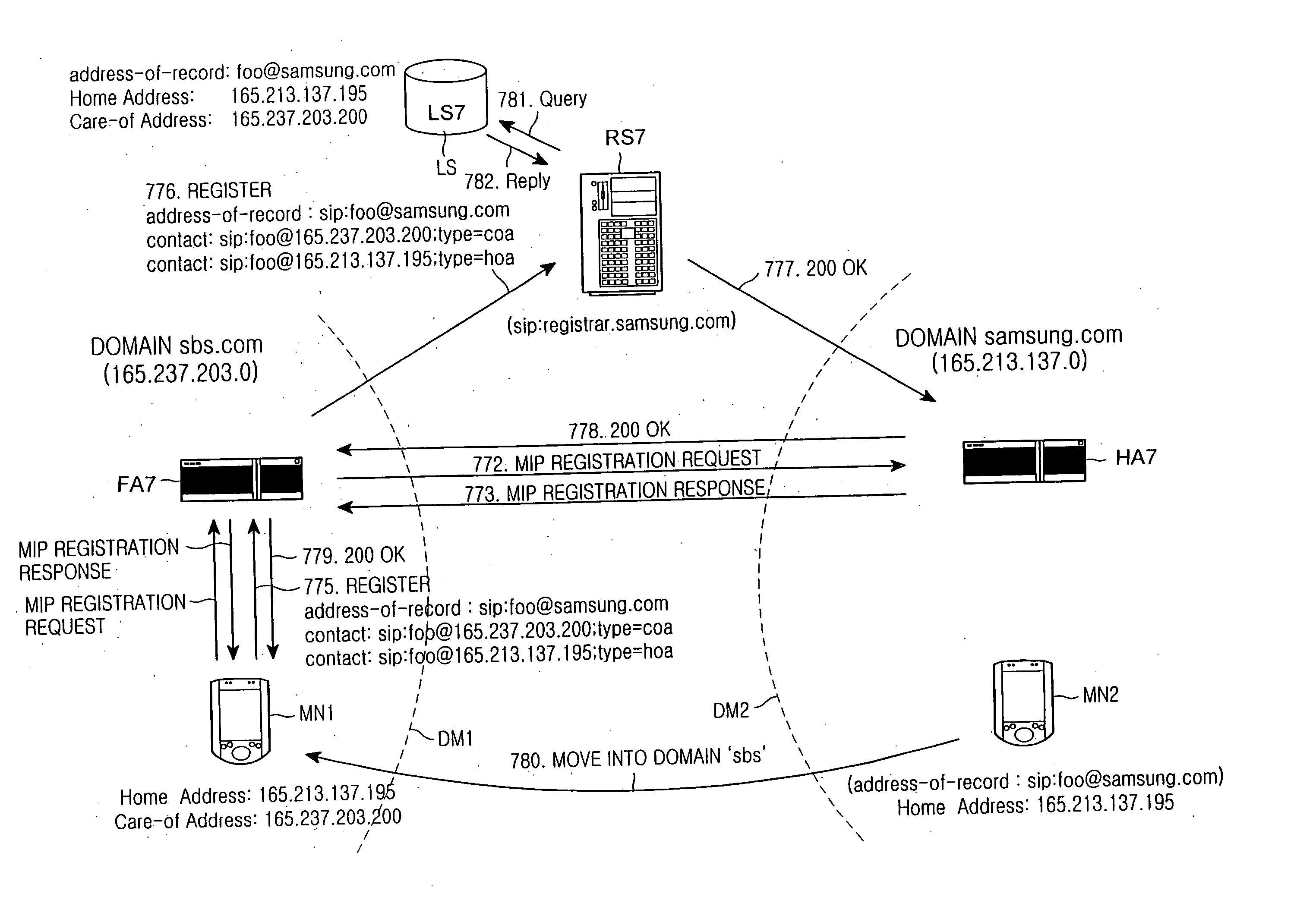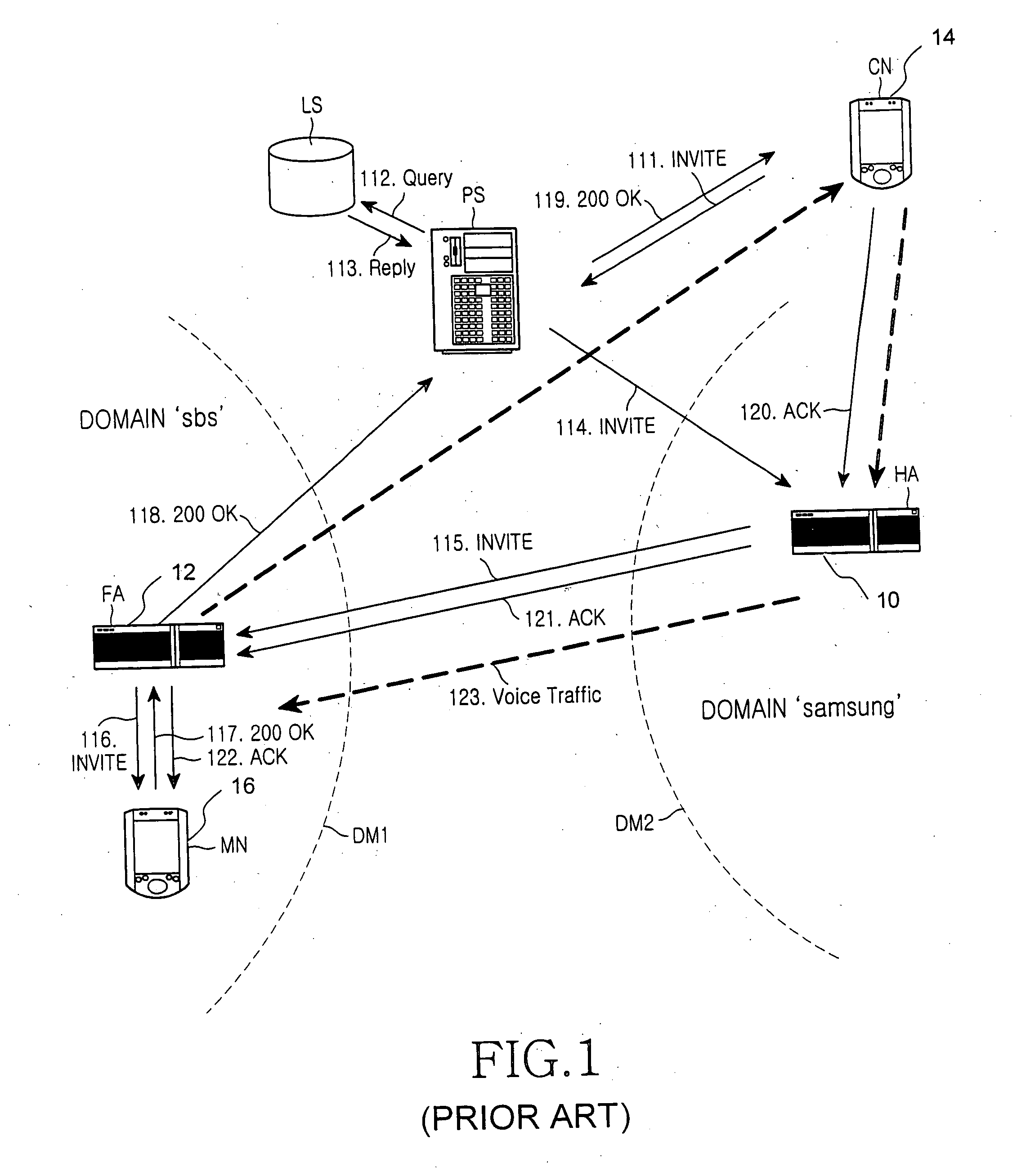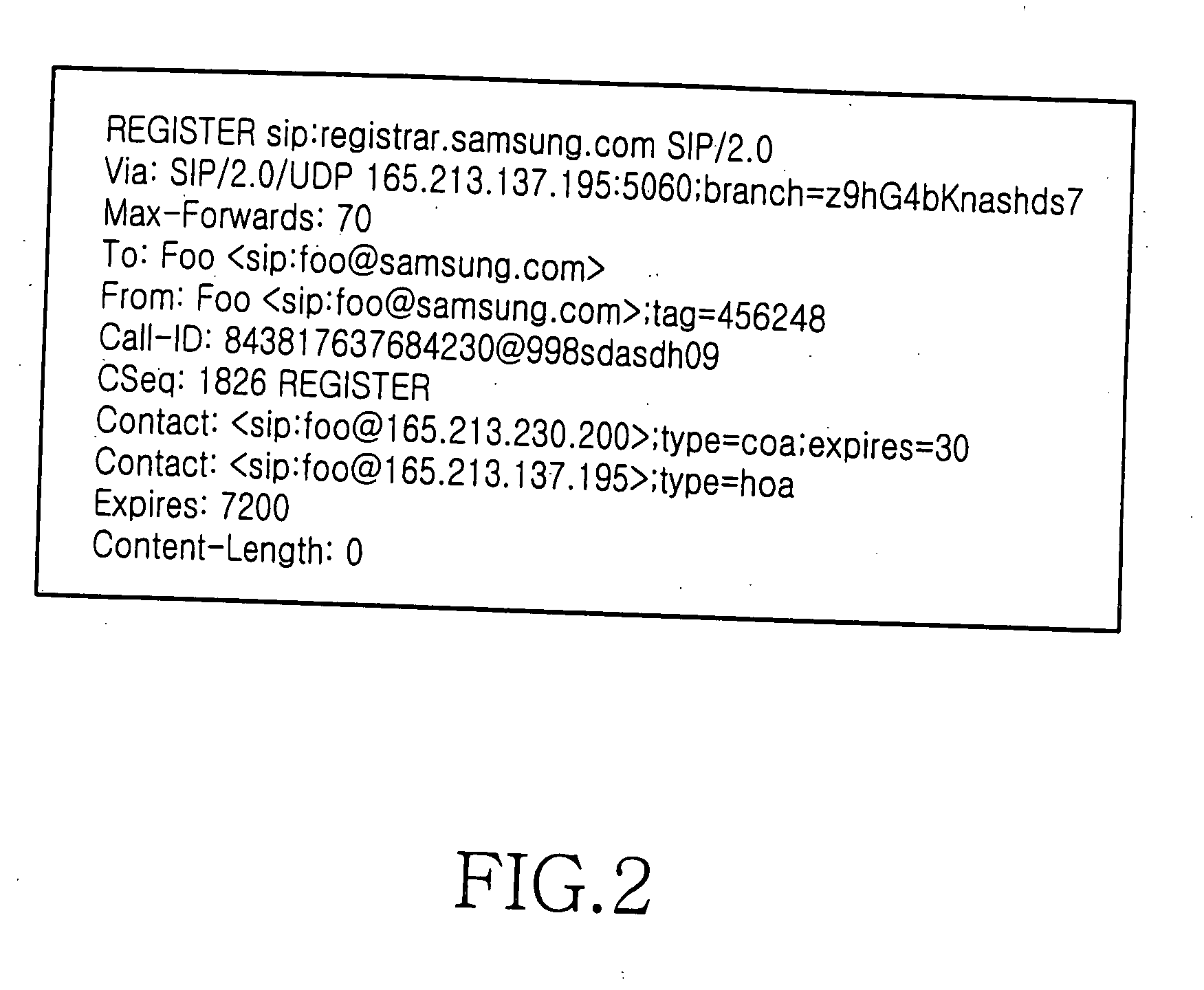Mobile terminal, session initiation protocol server, and method of controlling routing path for voice-over-internet protocol service, based on mobile internet protocol, voice-over-internet protocol, and session initiation protocol
a voice-over-internet protocol and mobile terminal technology, applied in the field of mobile communication systems, can solve the problems of reducing affecting the quality of service, and not supporting mobility at the network level, so as to improve the communication quality of voip, minimize the load on the network, and efficiently manage the network
- Summary
- Abstract
- Description
- Claims
- Application Information
AI Technical Summary
Benefits of technology
Problems solved by technology
Method used
Image
Examples
first embodiment
[0029]FIG. 2 is a table which shows a construction of an SIP register message in a visitor network according to the present invention.
[0030] The register message according to the present invention uses new parameters together with a contact header. In order to distinguish whether an address indicated by a contact header is a home address or a CoA (Care of Address), a new parameter “type” is defined. For example, “type=hoa” represents that an address indicated by a contact header is a home address, and “type=coa” represents that an address indicated by a contact header is a CoA. A parameter “expires” represents an available period of the register message, which is expressed in terms of minutes. For example, as shown in FIG. 2, “expires=30” indicates that the available registration period is 30 minutes. If the parameter “expires” exists in only a specific contact header, only information of the specific contact header expires when its available period is over. Therefore, it is necessa...
second embodiment
[0036]FIG. 3 is a flow diagram for explaining a method of controlling a routing path for a VoIP service according to the present invention, with respect to an example of using a foreign agent CoA.
[0037] In step 331, when a mobile terminal 30 in a standby state having been located in a home network moves into a different network, mobility detection is performed by a mobile IP mechanism of the mobile terminal 30, and then the mobile terminal 30 requests registration to the home agent 34.
[0038] In step 332, the mobile terminal 30 transmits a register message, that includes a contact header into which its own home address and a new CoA—a foreign agent CoA (hereinafter, referred to as “FACoA”) are recorded, to the foreign agent 32. In this case, in order to discriminate between the two addresses, the parameter “type” is used as described in the above-mentioned FIG. 2.
[0039] The foreign agent 32 transmits the register message to the SIP server 36, that is, to the registra server, via th...
third embodiment
[0055]FIG. 4 is a flow diagram for explaining a method of controlling a routing path for a VoIP service according to the present invention, with respect to a case of using a Collocated CoA (hereinafter referred to as a “C-CoA”).
[0056] The FACoA is an IP address of a foreign agent, which interfaces a mobile terminal to a foreign network where a mobile terminal 40 is visiting. In contrast, the C-CoA (Collocated CoA) is an IP address which is temporarily assigned for interfacing with a mobile terminal itself. The C-CoA represents a current location of a mobile terminal which is located in a foreign network. When an end point of a tunnel, which is established by a home agent for transmitting a packet, is a mobile terminal, the mobile terminal has to have the capability of decapsulating encapsulated packets, and in this case, the CoA used by the mobile terminal is the C-CoA.
[0057] As compared with the embodiment shown in FIG. 3, the embodiment shown in FIG. 4 uses the mobile terminal 40...
PUM
 Login to View More
Login to View More Abstract
Description
Claims
Application Information
 Login to View More
Login to View More - R&D
- Intellectual Property
- Life Sciences
- Materials
- Tech Scout
- Unparalleled Data Quality
- Higher Quality Content
- 60% Fewer Hallucinations
Browse by: Latest US Patents, China's latest patents, Technical Efficacy Thesaurus, Application Domain, Technology Topic, Popular Technical Reports.
© 2025 PatSnap. All rights reserved.Legal|Privacy policy|Modern Slavery Act Transparency Statement|Sitemap|About US| Contact US: help@patsnap.com



